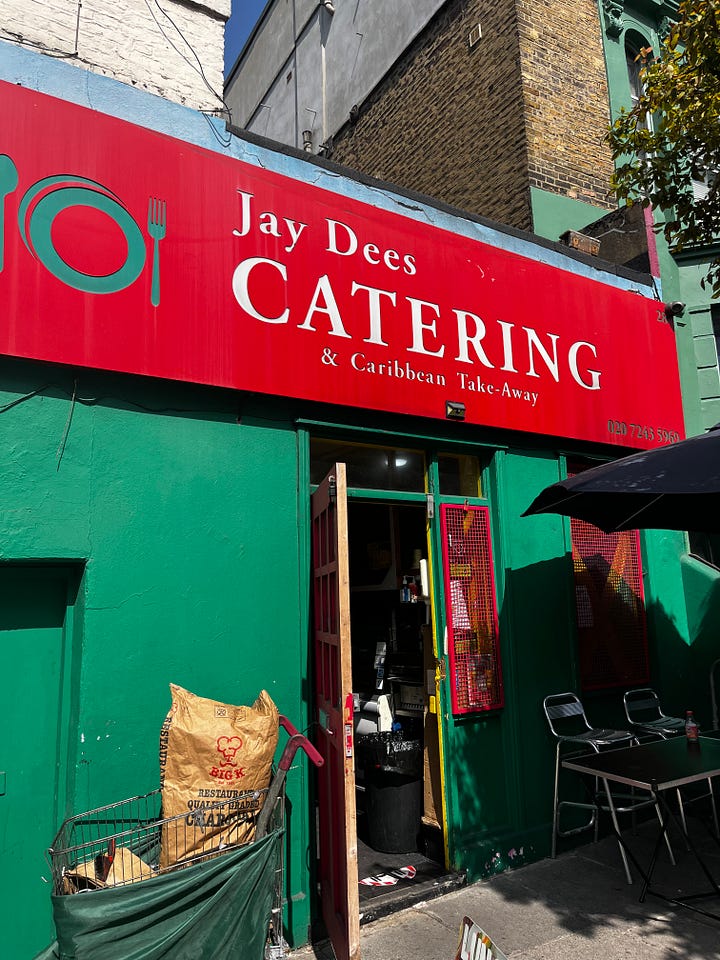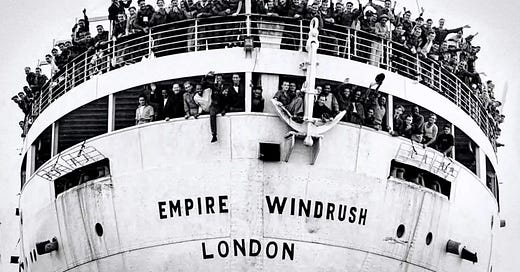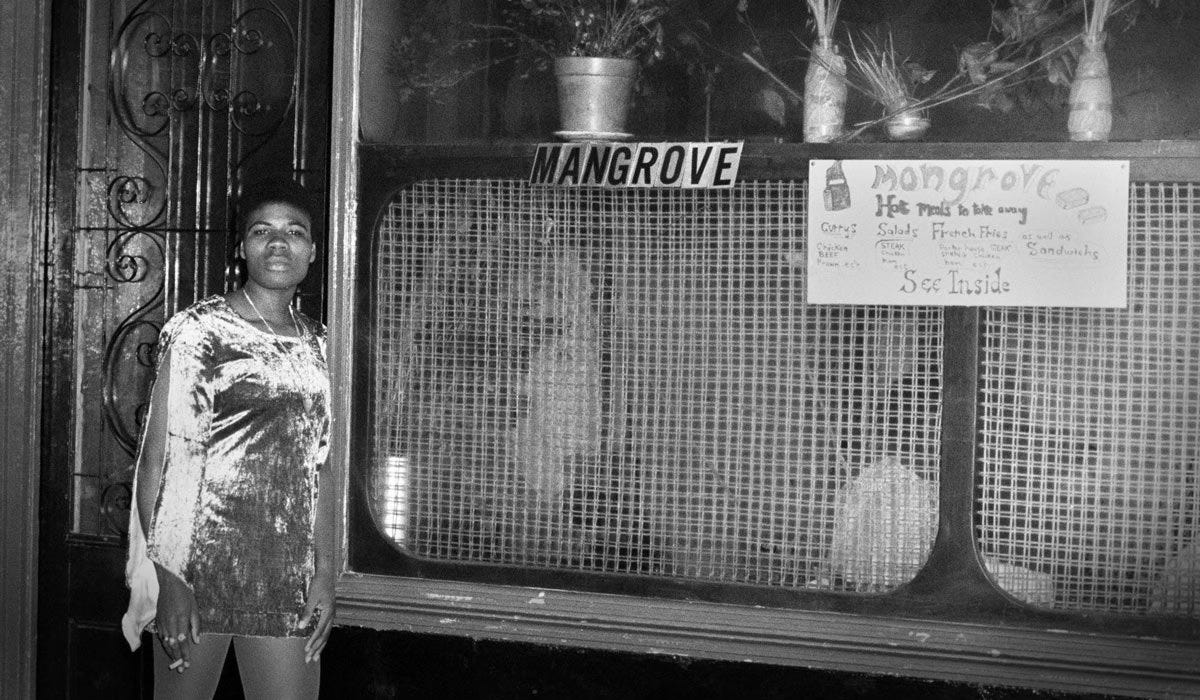The first time I tried Caribbean food was during one of my frequent visits to DC while crashing at my older brother’s apartment. My first spoonfuls of curry, rice & peas, mac & cheese, and plantains met my mouth with a familiarity of flavors I grew up eating, yet the items on my plate still differed from my traditional Sunday meal. Now looking back at my time living in the US, especially in my childhood home or even in DC, I had taken these plates of soulful-filling flavors for granted.
I never thought I would be homesick once I left the US. Of course, I haven’t missed the heartbreaking chaos that’s happening as I write this, but I have missed the access to the food that I grew up eating and the foods I found later in my 20s. I especially miss those who I shared these meals with. I know that every time I return to the US, my mom’s cooking will eagerly greet me (hint hint mom), but for those who picked up their entire lives and families to immigrate to a new country, their date of return to their home was unknown if they were even ever able to return. I decided to go to England to attempt to cure this homesickness since England similarly has a diverse selection of cuisine for one to choose from around the world.
This diversity of cuisine in London is only due to the immigration that England has experienced within the past few generations. I have endless gratitude and admiration for the Windrush Generation.
The Windrush Generation
The Windrush Generation arrived in England on the ship, HMT Empire Windrush, at Tilbury Docks in 1948. Passengers of the Windrush were falsely recruited to support England’s suffering labor market as the country recovered from 2 World Wars (bbcgoodfood.com). Many of those who boarded the ship dreamt of a better life that included new opportunities for them and their family.
You can read more about the Windrush Generation here.
Though there had been a Caribbean community prior to the arrival of the Windrush, this generation brought a flavorful eruption to the British food scene. The Windrush Generation brought their traditions from Trinidad, Jamaica, St. Lucia, and other countries to England, including the recipes from their old home.
What I found fascinating from an article I read by goodfood.bbc.co.uk was that,
“In the mid 1950s, due to slow export times of ships (keep in mind the Windrush journey took almost a month) it was near impossible to import Caribbean foodstuffs like yams, plantain, sweet potato, callaloo leaves and ackee – all the things that make up traditional meals. As such, they had to do with what was available.
Thanks to the adjacent Indian community, which historically contributed a good deal of meals to the Caribbean menu (due to the indentured labour migration that followed the abolition of Transatlantic slave trade), things like curry were possible. With this, meals like curried chicken, lamb or mutton with rice and peas, as well as fried dumplings made from flour and water, were the staples of the early population.”
I knew the similarities between Caribbean and Indian cuisine, but I never knew why they were so similar and never thought about how these similarities could be beneficial for the communities when immigrating to the same place. This new set of knowledge has also inspired me to head to a shop in Lisbon where I can attempt to cook some Caribbean dishes with the help of the Indian markets in the city.
Food & Politics: The Mangrove
Around the 1970s, more Caribbean restaurants were popping up around England, including a famous restaurant known as The Mangrove. The Mangrove became a hub for food and music from the West Indies. It also served as a safe space for folks to gather and organize. There is an anthology series called Small Axe which has an episode specifically dedicated to The Mangrove. Unfortunately, the restaurant closed in 1992, so I was unable to try their food during my visit.
Food shops in Britain
Food shops or corner stores in any city are often considered the heart of the neighborhood. Sometimes it’s where you can go to get the toilet paper you desperately need, or it can be the vessel to transport you back to your home country by playing music or offering familiar products.
When Carribbean shops opened in Britain, mangoes, beef patties, jerk chicken, spices found in Carribbean foods, and hair care could be found on the shelves. These shops were (and still are) pivotal markers in Black Britain history as these shops were opportunities for Black folks to have their own businesses in a time of widespread discrimination in the UK.
“They were significant because they were among the first public displays of Caribbean life, besides music, that people from outside the community would have interacted with…For those within the community, bakeries, mini markets and restaurants were more like social hubs than just places to buy food. They were places to see familiar faces and to organise – be that a party or a protest”
-Riaz Phillips, author of Belly Full and chronicler of Caribbean diaspora food in the UK
This is all to say, never estimate the power of a grocery store.
So, what’s Caribbean food?
As someone who is not of Caribbean descent, I will not participate in the defining of what is or isn’t part of the cuisine. However, as someone who is a fan of Caribbean food, I will share photos of one of my favorite meals in London with you:


I was over the moon when I ate my veggie patty, mac & cheese, cabbage, and beans & rice from Jay Dees! If you know, you know. If you don’t, consider taking a trip to London to change things.
Hungry for more?
Season 2, Episode 1’s guest, Monique Needham, directed a short film with Black Brits reminiscing on the house party culture in the UK that of course included delicious food, great music, and bangin’ fits.
I hope you enjoyed this brief piece on the Windrush Generation & the history of the Caribbean food scene in Britain as much as I enjoyed researching the generation that shifted British cuisine for the better of the entire country. If you’re interested in hearing more about the visibility of Black Britain, listen to my episode with Monqie Needham, and be sure to check out her work.
If you have any comments regarding this piece, or if you want to say hello, please leave a comment or send an email to platedhistory@gmail.com. I would love to hear from you!
Until next time,
Monét
PS. Plated History is also on Instagram if that's your thing.
Sources:
https://www.bbcgoodfood.com/article/caribbean-food-culture-uk
https://antiracistcumbria.org/the-mangrove-nine/
https://www.bbc.co.uk/news/extra/jGD9WJrVXf/the-mangrove-nine-black-lives-matter
https://research.appetitesg.com/idea/reenvision-british-carribean-food/







I’m hungry for a veggie patty now ❤️
Wow I had no idea about this! 👏👏👏 Great piece